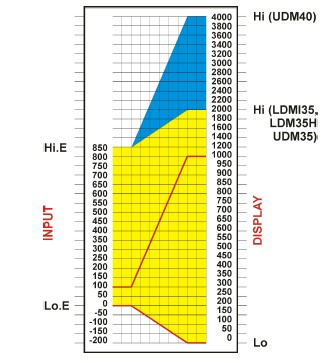 |
Q. When do I need to use digital filtering
with a UDM meter?
The digital filter makes the displayed value
more stable in case of fluctuation. The fluctuation can be caused
by two different reasons: the oscillation of the input signal or the
expansion of the displayed scale with respect to the electrical one.
If, for instance, the selected range from an input thermocouple signal
is 0 to 100°C and the desired displayed values must be from 0.0
to 100.0 °C, it means that the scale expansion factor is 10. In
fact we have a 100- point interval as input (100-0=100) and a 1000-point
range as output (not considering the decimal point, 1000-00=1000)
and the output/input ratio is 1000/100=10. This implies that for each
possible value of the input, 10 output values are corresponding and
a 10-digit fluctuation of the output can be expected and the digital
filtering is necessary to correct this behaviour. Considering the
example in figure 1, the input interval is 800 (1000-200), the output
one is 1800 (1800-00), the ratio is 2.25. It means that at least a
2-digit fluctuation is expected and requiring the use of the digital
filter. Note that if the mentioned ratio is lower than 1 (it means
compression of the scale), the digital filter is not necessary and
there is a loss of resolution.

|
|